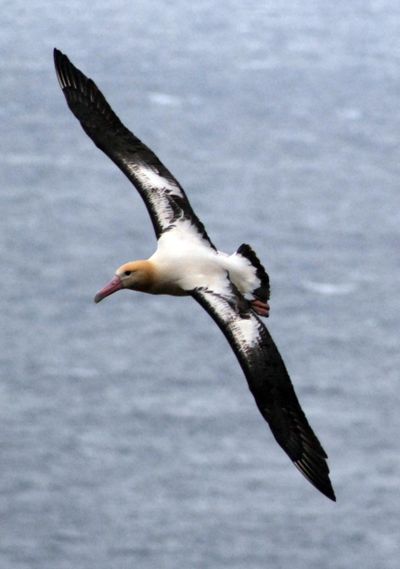Japan sees major step in comeback of albatross

TOKYO – A wild short-tailed albatross born to an artificially reared mother on the Ogasawara Islands was confirmed to have returned to the chain – the first time a wild member of the species has returned to the islands from migration in about 80 years.
The return of the wild albatross, a species designated by the government as a special natural treasure, was announced by a group of organizations led by the Yamashina Institute for Ornithology on Friday. The last wild population of short-tailed albatrosses to inhabit the Ogasawara Islands existed in the 1930s.
The wild albatross with an artificially reared mother is believed to have left its nest on Nakodojima, one of the islands in the Ogasawara chain, in 2014, and migrated to the North Pacific Ocean.
The bird was then spotted on Mukojima, an island north of Nakodojima, on March 1.
Breeding sites of short-tailed albatrosses in Japan are limited to Torishima, one of the Izu Islands, and the Senkaku Islands in Okinawa Prefecture. The Izu islands are home to a population of about 4,200 birds.
From 2008 to 2012, the Environment Ministry and other entities relocated 70 chicks from Torishima in the Izu Islands to Mukojima in the Ogasawara Islands to breed them artificially.
Two to five years after leaving their nests, albatrosses return home to breed. Four wild albatrosses have so far been born to artificially bred birds in the Ogasawara Islands.